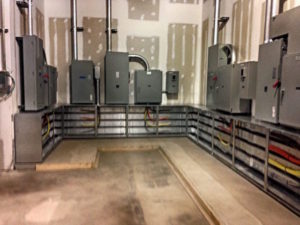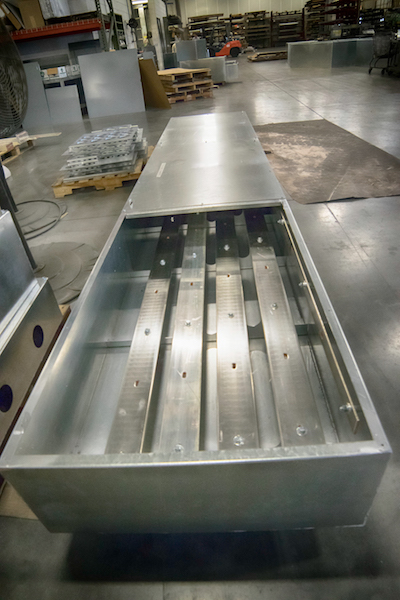In electrical systems, a bussed trough serves as a critical component for efficient power distribution. In this article, we will delve into the purpose and advantages of a bussed trough, shedding light on its role in facilitating safe and organized electrical installations.
Definition and Overview
A bussed trough, also known as a busway or bus duct, is an enclosed system that provides a safe and reliable means of distributing electrical power. It consists of a metal enclosure housing copper or aluminum busbars, which serve as conductors for the transmission of electrical current. Bussed troughs are designed to handle high currents and are available in various configurations, such as straight runs, elbows, and branches. They are commonly used in commercial, industrial, and institutional settings to deliver power to electrical equipment, such as switchgear, motor control centers, and panelboards.
Efficient Power Distribution
 The primary function of a bussed trough is to enable efficient power distribution throughout a facility. By housing busbars within a protective enclosure, the trough ensures the safe transmission of high electrical currents from the main power source to the load centers. The busbars within the bussed trough act as an organized highway, eliminating the need for extensive wiring and multiple point-to-point connections. This simplifies the electrical installation process, reduces the risk of loose connections, minimizes voltage drop, and enhances overall system efficiency.
The primary function of a bussed trough is to enable efficient power distribution throughout a facility. By housing busbars within a protective enclosure, the trough ensures the safe transmission of high electrical currents from the main power source to the load centers. The busbars within the bussed trough act as an organized highway, eliminating the need for extensive wiring and multiple point-to-point connections. This simplifies the electrical installation process, reduces the risk of loose connections, minimizes voltage drop, and enhances overall system efficiency.
Flexibility and Scalability

Bussed troughs offer flexibility and scalability in electrical installations. They can be easily customized and adapted to meet changing power distribution requirements. Additional sections can be added or modified, allowing for expansion without significant disruptions to the existing electrical infrastructure. This flexibility also enables easy reconfiguration of power distribution routes, accommodating layout changes or equipment additions. Moreover, bussed troughs can incorporate tap-off units, allowing for convenient connection and disconnection of individual loads, providing versatility in load management and future system modifications.
Enhanced Safety and Reliability
Bussed troughs enhance safety and reliability in electrical systems. The enclosed design provides protection against accidental contact with live parts, reducing the risk of electrical shock or equipment damage. The robust construction of the trough ensures durability and resistance to environmental factors, such as moisture, dust, and vibrations. Furthermore, the standardized design and factory-tested components of bussed troughs contribute to reliable performance and compliance with electrical safety standards. By centralizing power distribution and minimizing electrical connections, bussed troughs also decrease the potential for loose connections, hot spots, and power quality issues.
Conclusion
Bussed troughs are integral to efficient power distribution systems, offering numerous benefits in terms of safety, reliability, and flexibility. By organizing and simplifying power transmission, bussed troughs enable efficient electrical installations, improve system performance, and provide a scalable solution for adapting to changing power distribution needs.